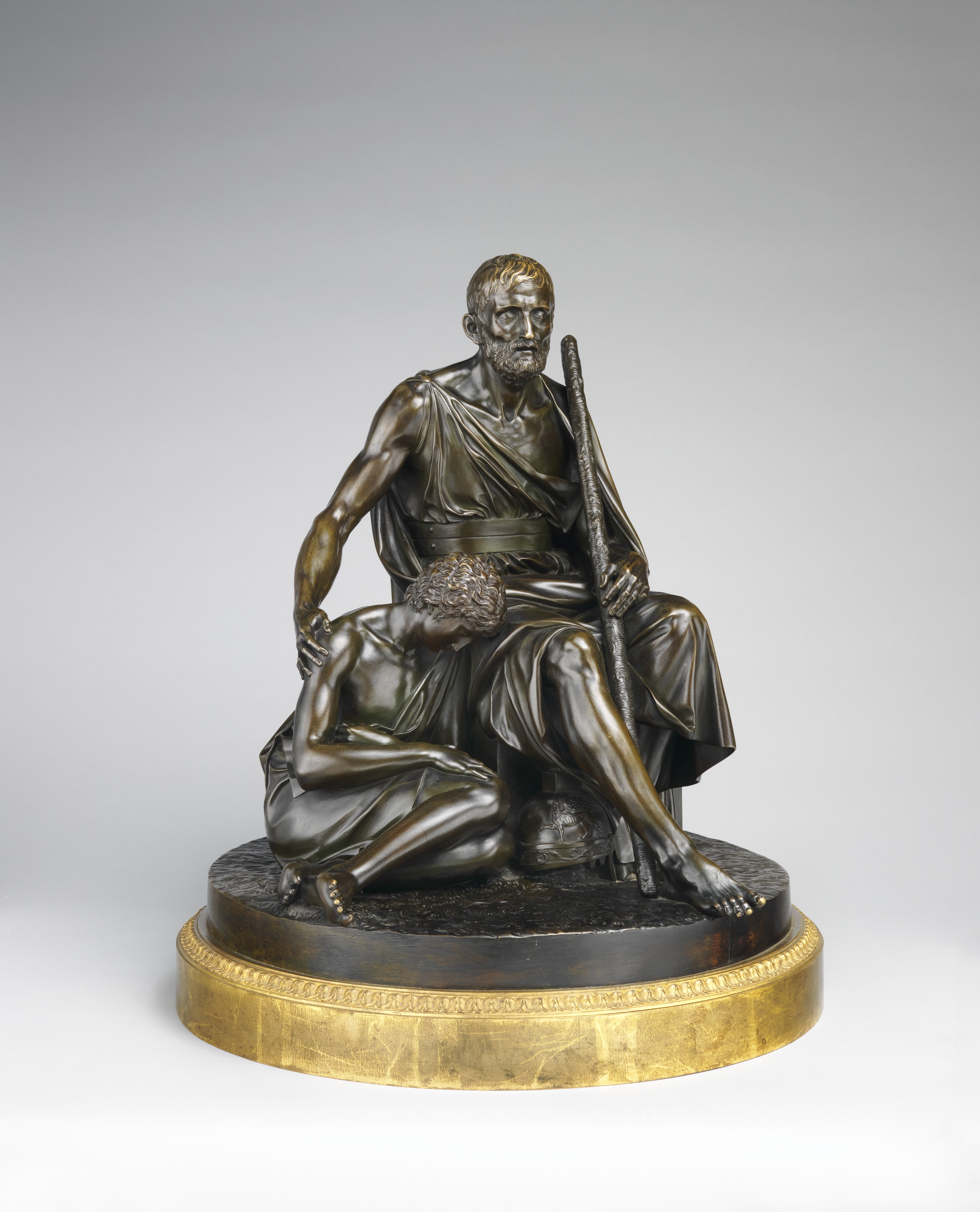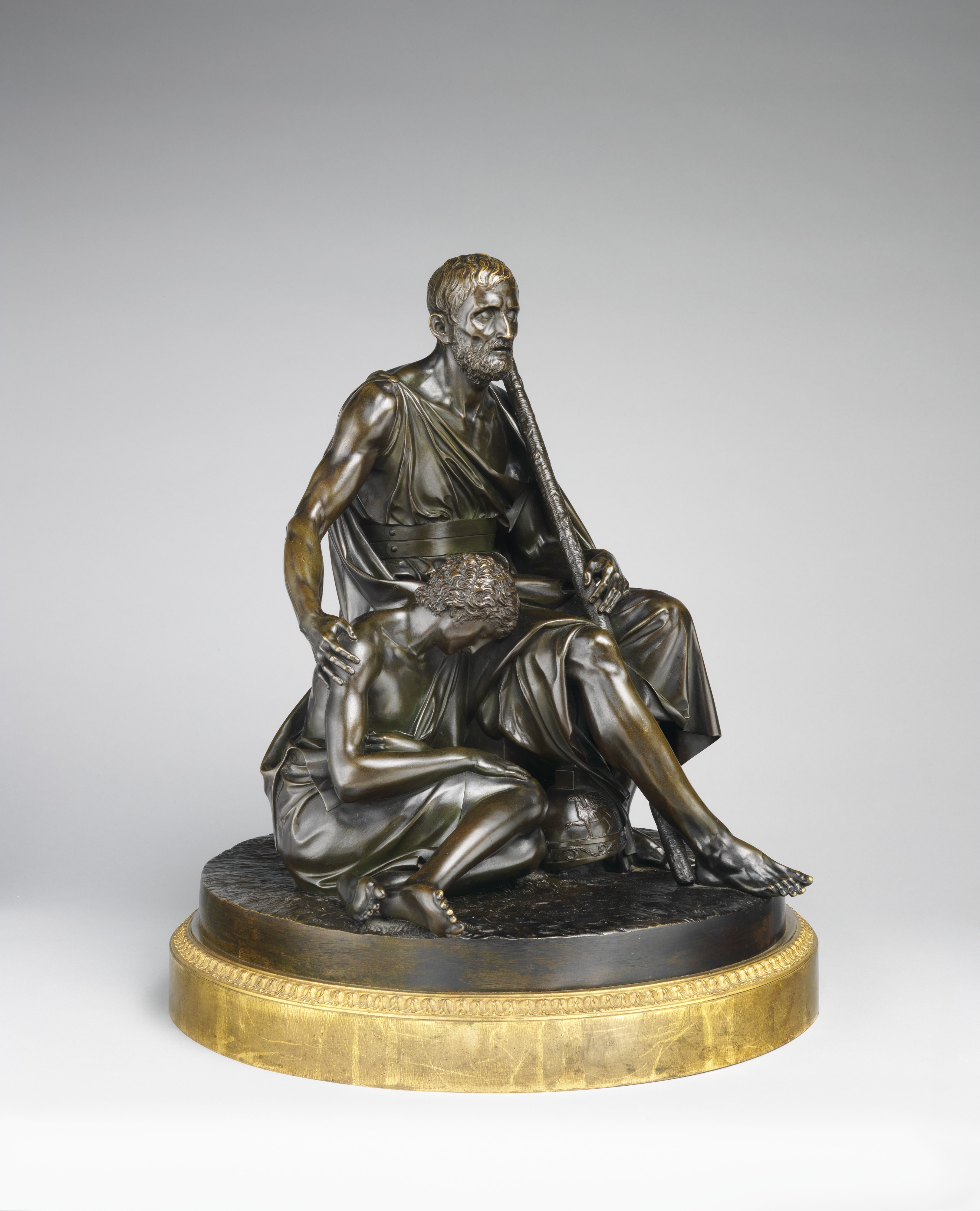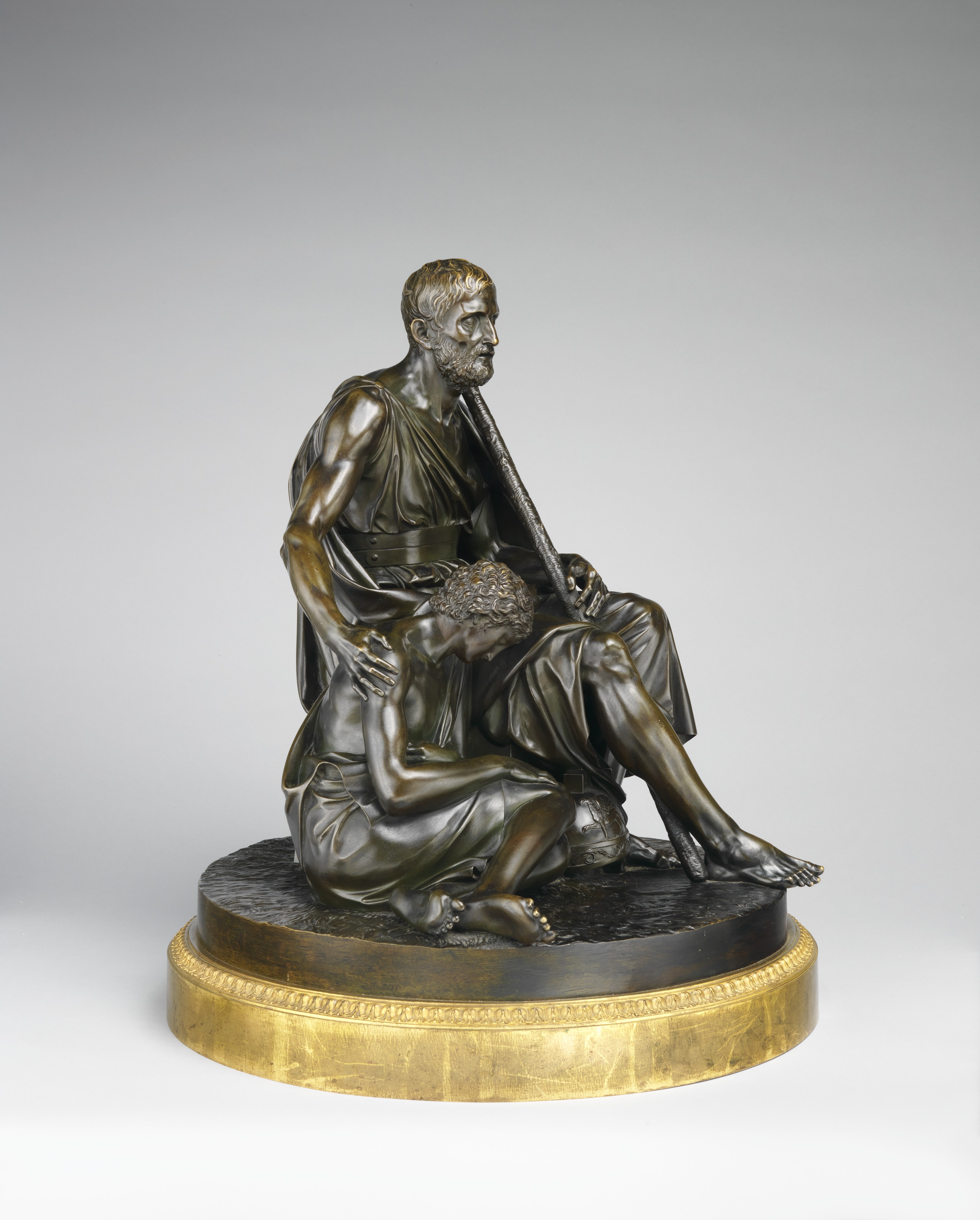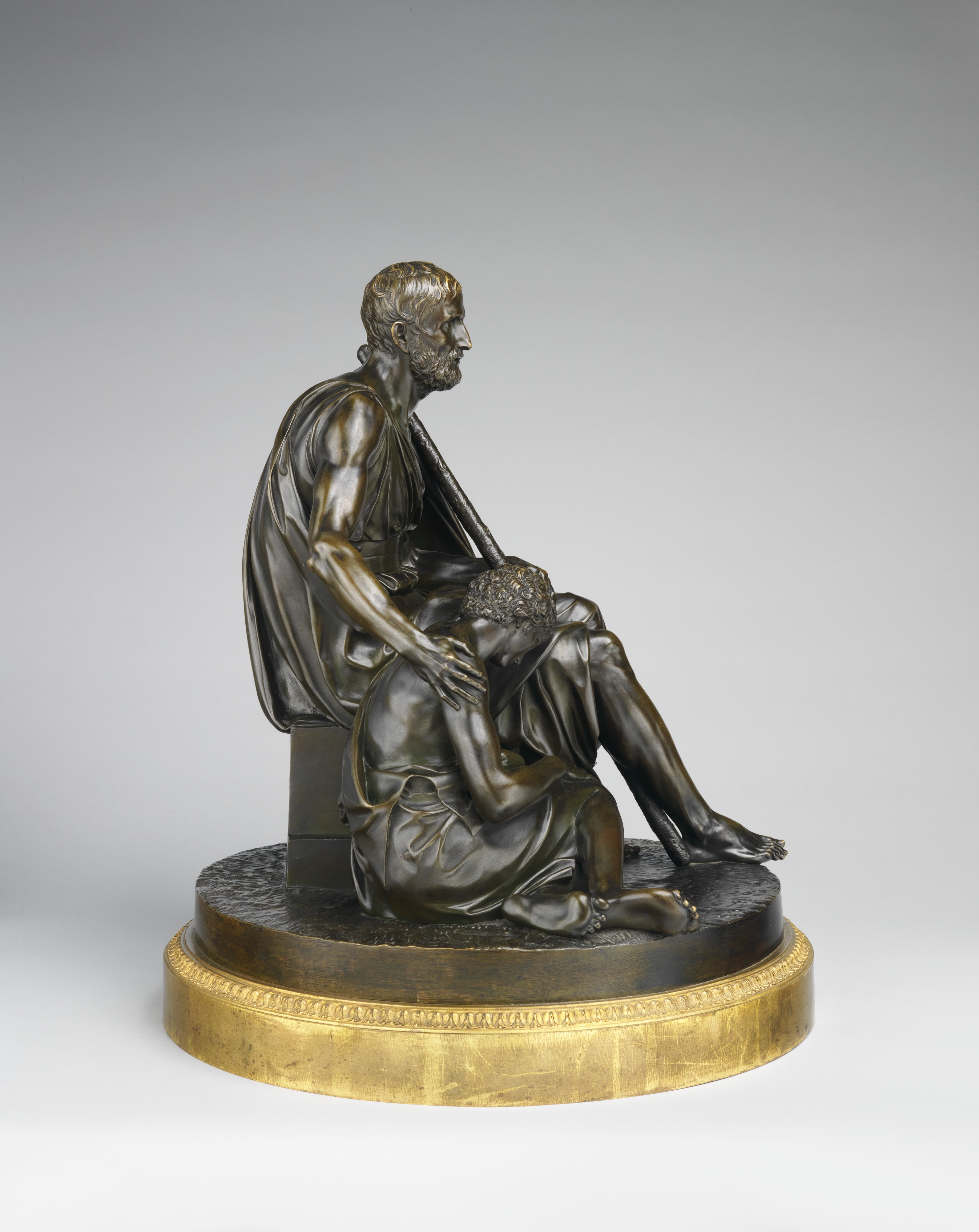Belisarius and His Guide
Antoine Denis Chaudet French
The popularity of the victorious sixth-century Byzantine general Belisarius aroused the jealous wrath of his emperor Justinian to the point that he had Belisarius imprisoned, then blinded and turned loose to beg for his living. Antiroyalist elements in French society found parallels in the court of Louis XVI, which was coming under increased criticism. When the terracotta model for this group was exhibited at the Salon of 1791, the sentimental Neoclassical public surely relished its pathos and the contrast between the forms of the sightless but ever-proud mendicant and his weary young guide. The quality of the bronze's chasing led early commentators to suppose Chaudet carried it out himself, but more likely he turned to a professional foundry for the expertise needed to give the metal its dazzling range of surfaces. The Neoclassical age sometimes had unexpected kinetic moments: fitted within the unpatinated base is the original turntable on which the group can be revolved so as to be appreciated from every angle.
Due to rights restrictions, this image cannot be enlarged, viewed at full screen, or downloaded.
This artwork is meant to be viewed from right to left. Scroll left to view more.









